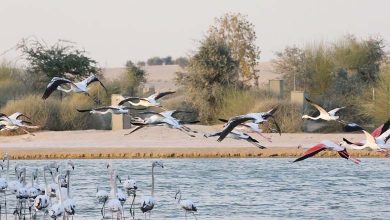Study: Trees in arid areas are at risk of climate aridification

The first challenge for humanity and the planet… Climate change is a threat to our Globe
In a global context of high climate change and accelerating species extinction, researchers estimate that 44% to 88% of tree species in hot drylands will experience climate aridification with a high risk of decline, including in the Sahara Desert.
In a study entitled “The biodiversity of trees in hot arid areas is likely to decline in a drier world” published in the journal Global Change Biology, researchers from the Mediterranean Institute of Biodiversity and Marine and Continental Ecology (IMBE) of the Universities of Avignon and Aix-Marseille report that the risk of tree decline in hot arid areas has been neglected when water supply is already a limiting factor for plant life in these areas.
Ecologists report that warm dryland ecosystems are among the most vulnerable to climate change, while trees provide essential services to people in these environments, such as wood-based fuels, water regulation, agricultural or spiritual services. They play a central role in mitigating desertification and provide crucial ecosystem services for 2 billion people.
Hot drylands also account for 19% of the world’s land area and are home to around 1,100 tree species. The recent State of the World’s Trees reports that of the 58,497 known tree species worldwide, 30% are threatened with extinction, and 142 could already be extinct.
According to the researchers, a large proportion of tree species, ranging from 44% to 88% of the species in the hot arid zones studied, are expected to undergo climate aridification with a high risk of decline even under the most optimistic conditions. Some 62-88% of them are not adequately armed to cope with the more arid climate, reflecting the effects of widespread desertification. On a continental scale, the risk ranges from 21% in the Sahara Desert to 90% in Australia.
That figure – the 21%, which is a tiny fraction compared to Australia – is consistent with several studies suggesting increased rainfall in hot arid and desert areas such as the Sahara Desert.
The Sahara Desert is one of the newest hot arid lands in the world with a high climate instability probably limiting the evolutionary radiation of lines adapted to xeric conditions and allowing its colonization by more mesic lines. For example, the researchers cite the hardy shrub Tamarix ramosissima Ledeb, commonly referred to as highly branched Tamaris, Tamarix africana Poir or African Tamaris, and the shrub Juniperus turbinata Guss, all characterized by both high exposure and vulnerability, or Ficus carica L., better known as Edible Fig, is expected to undergo low climate aridification.
“We estimated the drought niche using the available occurrence data, but it may not reflect the actual drought tolerance limits for some species, for example, due to gaps in occurrence data in some warm arid areas such as the Sahara Desert,” say the ecologists, noting that this factor may also play a major role in the future decline of tree species in arid areas.
For example, biologists see climate change as a major threat to biodiversity, and its impact on species’ extinction risk can be largely ignored in large-scale assessments such as the IUCN Red List.












